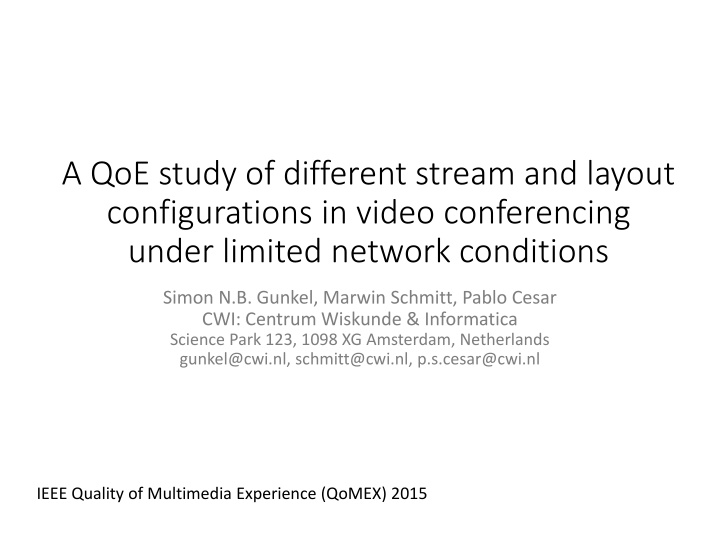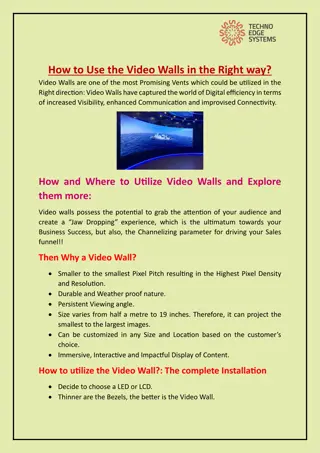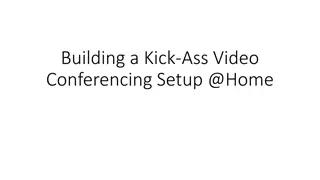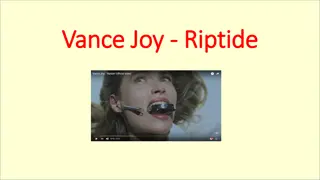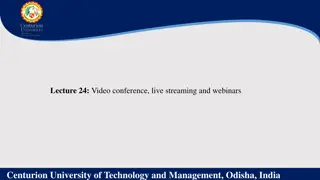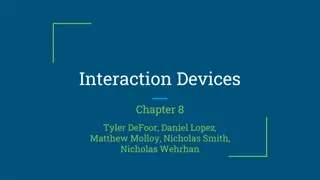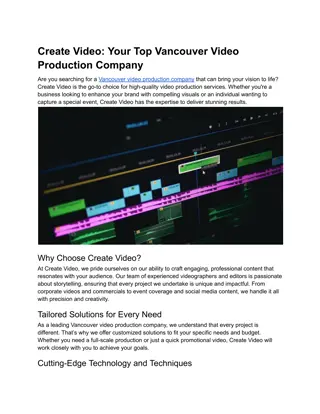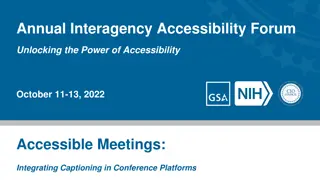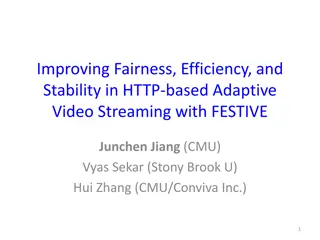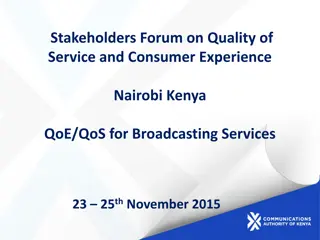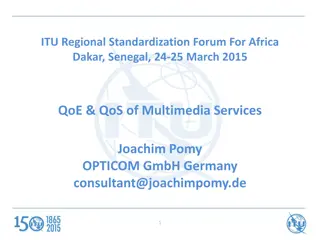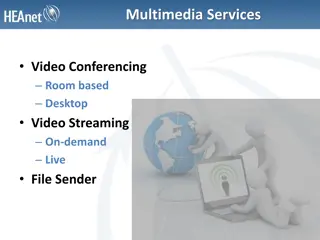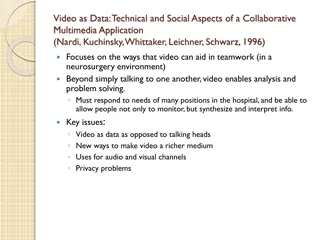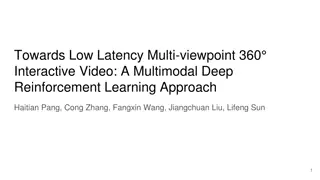QoE Study of Video Conferencing Layouts & Network Conditions
This study investigates the impact of layout, video quality, and network limitations on Quality of Experience in video conferencing under limited network conditions.
Download Presentation

Please find below an Image/Link to download the presentation.
The content on the website is provided AS IS for your information and personal use only. It may not be sold, licensed, or shared on other websites without obtaining consent from the author.If you encounter any issues during the download, it is possible that the publisher has removed the file from their server.
You are allowed to download the files provided on this website for personal or commercial use, subject to the condition that they are used lawfully. All files are the property of their respective owners.
The content on the website is provided AS IS for your information and personal use only. It may not be sold, licensed, or shared on other websites without obtaining consent from the author.
E N D
Presentation Transcript
A QoE study of different stream and layout configurations in video conferencing under limited network conditions Simon N.B. Gunkel, Marwin Schmitt, Pablo Cesar CWI: Centrum Wiskunde & Informatica Science Park 123, 1098 XG Amsterdam, Netherlands gunkel@cwi.nl, schmitt@cwi.nl, p.s.cesar@cwi.nl IEEE Quality of Multimedia Experience (QoMEX) 2015
Introduction Wide popularity of video conferencing systems Limited research work in the aspect of group conversation analysis in video conferencing one to many This paper study the relationship between QoE and three different factors: layout, video quality, and network limitations
System and Architecture European Framework 7 project Vconect Server-centric architecture
Client side capturing, encoding and transmitting (conventional video chat) receive, decode and compose multiple audio and video streams automated analysis of the captured audio and video stream
Server side Social communication between a large number of end points Efficient packet switch and replicator which connects multiple source to multiple clients Messages transmissions between components and session management
Reasoning Layer The Optimiser ensures optimal use of the network at lowest cost, while maximizing the Quality of Experience for users Orchestrator takes decisions on the visual layout and whom to show The Experiment Control adjusts the algorithm to the different study conditions, and helps to synchronize log data from the different components
Study Setup and Methodology focus on the relationship between QoE and three different factors: layout, video quality (resolution) and network limitations (packet loss) 20 participants in 5 groups from 16 different nationalities, with an average age of 27 (SD 5), and 6 different professions discussion about wilderness survival already employed in other multi-party video conferencing studies and a similar task is suggested in ITU P.1301 4 different layout/stream configurations
Research Questions RQ1. How is the relationship between individual influencing factors and the QoE? RQ2. What is the impact of network restrictions to the choice of layouts? RQ3. Can we improve the QoE by choosing a particular layout and stream configuration based on the network limitations?
Study Conditions C1/C2 LQ: 320x180, 15 fps, and 128 kbps HQ: 1280x720, 15fps and 800kbps
Procedure Similar PC and rooms (furniture and lighting) 12 questions, assessed on a 9-Point likert-like scale 4 questions directly concerned with QoE Overall experience Visual quality Audio quality Distortion Collect information from the System (network data, communication data) and questionnaire data
Results - Questionnaire Rating and Network Loss The Overall Experience, Video Quality and Audio Quality are rated similar across the whole study except the distortion it is difficult for the participants to differentiate the between the different factors that influence the QoE
Results - Questionnaire Rating and Network Loss The loss mainly occurs in the high resolution streams higher data transfer rates and peaks while switching streams, as well as transmitting I-frames the distortion rating and the loss rate follow the same pattern the error has more impact on the QoE than the lower quality due to lower resolution and bitrate
Results Conditions and Correlations the most values correlate (at least weak) with a negatiive correlation of distortion
Results Conditions and Correlations Audio became more important than video under condition 3
Results Overall ranking a stronger tendency of users towards the tiled layout (C2 + C4)
Conclusion it is difficult for participants to distinguish between the overall conversation dynamics and the different other factors (like video and audio quality) that influence the perception and QoE the correlations between different influencing factors are different in the different conditions our conversation task does not strongly depend on visual ques the stability of the system and a balanced stream quality, as well as, a balanced visual layout seems most satisfying to the users
